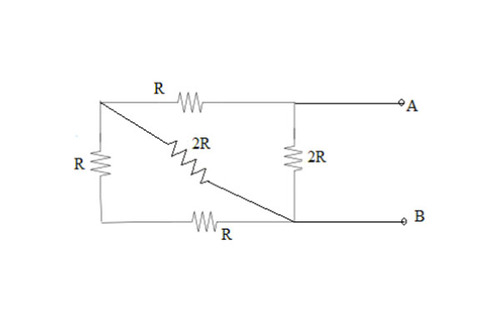Equivalent resistance 3
 Find the equivalent resistance between the two points
A
and
B
in the above combination of resistors.
Find the equivalent resistance between the two points
A
and
B
in the above combination of resistors.
This section requires Javascript.
You are seeing this because something didn't load right. We suggest you, (a) try
refreshing the page, (b) enabling javascript if it is disabled on your browser and,
finally, (c)
loading the
non-javascript version of this page
. We're sorry about the hassle.
2 solutions
The circuit will have following configurations:
-
One resistance of 2R is in parallel.
-
One resistance of R in parallel connected to two parallel resistors of 2R (R+R) and 2R.
Thus the resultant resistance will be the reciprocal of
2 R 1 + { R + ( 2 R + 2 R 2 R x 2 R ) 1 } = 2 R 1 + 2 R 1 = R 1 .
The reciprocal of 1/R is the resultant resistance of the circuit which is R.
The equivalent resistance
R e q = 2 R / / [ R + 2 R / / ( R + R ) ]
= 2 R / / ( R + 2 R / / 2 R )
= 2 R / / ( R + 2 R + 2 R 2 R × 2 R )
= 2 R / / ( R + R )
= 2 R / / 2 R
= R Ω